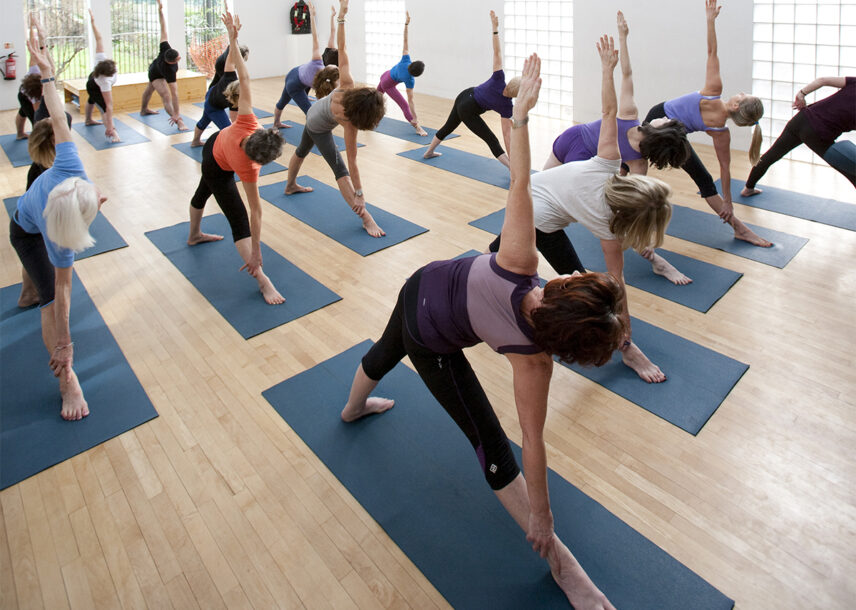To celebrate National Iyengar Day, we caught up with our friends at the Iyengar Yoga Institute to discover the many benefits of developing an Iyengar practice.
Accessible to everyone
You don’t have to be young, flexible and healthy to do Iyengar yoga. It is popular with young and old alike. BKS Iyengar, who developed the Iyengar yoga method, realised the benefits of yoga practice and was determined to find a way of making postures accessible to everyone, not just the young and flexible. He developed the use of props to help people get into and hold poses and famously continued his daily yoga practice until shortly before he died at the age of 95.
You are in safe hands with Iyengar yoga teachers
All Iyengar yoga teachers are trained to rigorously high standards. Teachers train for a minimum of three consecutive years with a certified Iyengar teacher then undertake a two year training programme before taking an intensive assessment of their practice, knowledge and teaching skills. Once qualified, teachers continue training and must complete professional development work every year.
Precise alignment
BKS Iyengar literally wrote the book on yoga postures. His text Light On Yoga was published in 1966 and is still considered essential reading for yoga students. Students and teachers from other yoga disciplines often come to Iyengar yoga classes to learn the correct alignment, actions and directionality of postures.
Non-commercial
Many well-known students practise Iyengar yoga, but it is not a commercial enterprise. Celebrity endorsements, branding and product extensions run counter to yoga philosophy. Iyengar yoga teachers focus on teaching each individual to the best of his or her ability and this integrity is at the heart of Iyengar yoga’s popularity.
World’s most widely practised method of yoga
Iyengar yoga’s popularity has spread organically through the demonstrations and books of BKS Iyengar and his family. There are Iyengar teachers and studios across the world from Beijing and Moscow to Rio and Sydney. So if you’re travelling, you can attend classes wherever you are and you will be familiar with the postures and style of teaching. BKS Iyengar set up a tightly controlled teacher training and accreditation system so that no teacher can call themselves an Iyengar teacher if they haven’t been through the rigorous training programme. This means that you can be confident in the quality of Iyengar yoga teachers.
No two classes are the same
Teachers modify the timing and sequencing of each class based on a range of factors including the condition of the students and time of day. This variety is one of the things Iyengar yoga students love. It stimulates the mind and body and helps support effective learning as students’ habits and expectations of themselves are challenged.
Meditation in action
In the Iyengar yoga method, students work on the physical body for several years to build the strength to allow them to take on the more internal, meditative aspects of the practice. For some students, building physical strength, flexibility and stamina are enough. But many discover the benefits of learning to focus the mind, body and breath to achieve a feeling of presence.



This is a really clear and easy to read explanation of our much loved Iyengar Yoga. I can almost hear my own voice as I read it, just as I answer my new students questions! Thank you and I can tell them to take a look at this too. I qualified in 1993 at MDIIY after training with Jeanne Maslen and Tricia Booth, two amazing teachers.
[…] The benefits of Iyengar yoga […]